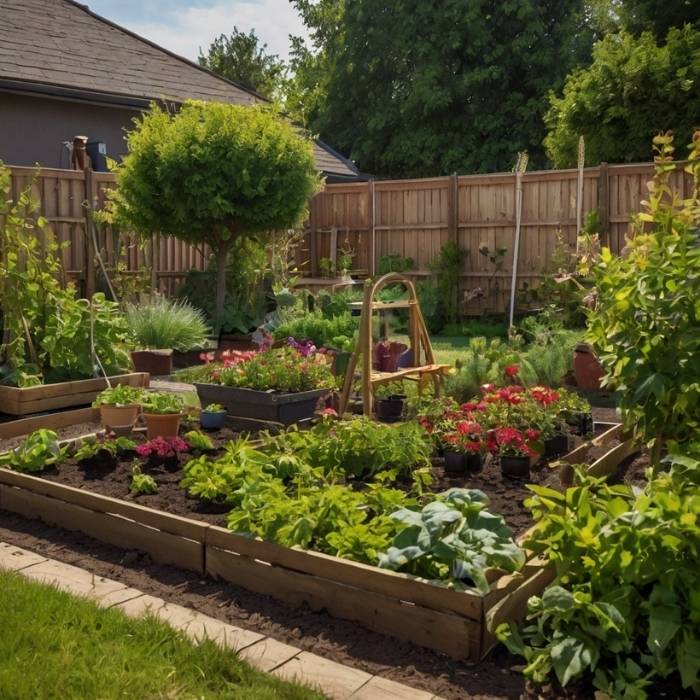Gardening for Beginners: A Comprehensive Guide to Growing Your Green Thumb
Gardening is more than just a hobby—it’s a rewarding journey that connects you with nature, improves your mental well-being, and even provides fresh, homegrown produce. If you’re a beginner, the idea of starting a garden might feel overwhelming, but don’t worry! This guide will walk you through everything you need to know to get started, from choosing the right plants to maintaining a thriving garden gardening for beginners.
Why Start Gardening?
Before diving into the “how,” let’s talk about the “why.” Gardening offers countless benefits:
- Health Benefits: Gardening is a great form of exercise, and spending time outdoors can reduce stress and improve mental health.
- Fresh Produce: Growing your own fruits, vegetables, and herbs ensures you have access to fresh, organic food.
- Environmental Impact: Gardens support pollinators, reduce carbon footprints, and promote biodiversity.
- Aesthetic Appeal: A well-maintained garden enhances the beauty of your home and creates a peaceful retreat.
Whether you’re looking to grow your own food, create a flower-filled oasis, or simply enjoy a new hobby, gardening is a fulfilling endeavor.
Step 1: Choose the Right Location
The first step in starting a garden is selecting the perfect spot. Here’s what to consider:
- Sunlight: Most plants need at least 6 hours of sunlight daily. Observe your yard to identify sunny and shaded areas.
- Soil Quality: Healthy soil is the foundation of a successful garden. Test your soil’s pH and nutrient levels, and amend it with compost or organic matter if needed.
- Drainage: Ensure the area has good drainage to prevent waterlogging, which can harm plant roots.
- Accessibility: Choose a location that’s easy to access for watering, weeding, and harvesting.
If you don’t have outdoor space, don’t worry! Container gardening on a balcony or windowsill is a great alternative.
Step 2: Decide What to Grow
As a beginner, it’s best to start with plants that are easy to grow and maintain. Here are some recommendations:
Vegetables for Beginners
- Tomatoes: Versatile and relatively low-maintenance.
- Lettuce: Grows quickly and can be harvested multiple times.
- Radishes: Fast-growing and perfect for small spaces.
- Green Beans: Hardy and productive.
Herbs for Beginners
- Basil: Thrives in warm weather and is great for cooking.
- Mint: Grows vigorously and requires minimal care.
- Parsley: A hardy herb that adds flavor to many dishes.
Flowers for gardening for beginners
- Marigolds: Bright, cheerful, and pest-resistant.
- Sunflowers: Easy to grow and add a dramatic touch to your garden.
- Zinnias: Colorful and attract pollinators like bees and butterflies.
When choosing plants, consider your climate, available space, and personal preferences.
Step 3: Gather Your Tools and Supplies
Having the right tools makes gardening easier and more enjoyable. Here’s a basic list of essentials:
- Gloves: Protect your hands from dirt, thorns, and blisters.
- Trowel: A small hand tool for digging and planting.
- Pruning Shears: For trimming plants and harvesting produce.
- Watering Can or Hose: Ensure your plants stay hydrated.
- Compost or Fertilizer: Enrich your soil for healthier plants.
- Containers or Raised Beds: Ideal for small spaces or poor soil conditions.
Invest in quality tools—they’ll last longer and make your gardening experience more enjoyable.
Step 4: Prepare Your Soil
Healthy soil is the key to a thriving garden. Follow these steps to prepare your soil:
- Clear the Area: Remove weeds, rocks, and debris.
- Loosen the Soil: Use a shovel or tiller to aerate the soil, allowing roots to grow easily.
- Add Compost: Mix in organic matter like compost or aged manure to improve soil structure and fertility.
- Test the pH: Most plants prefer a slightly acidic to neutral pH (6.0–7.0). Adjust the pH if necessary using lime (to raise pH) or sulfur (to lower pH).
Step 5: Plant Your Garden
Now comes the fun part—planting! Follow these tips for success:
- Read Seed Packets or Plant Tags: They provide important information about spacing, depth, and sunlight requirements.
- Start Small: Don’t overcrowd your garden. Give plants enough space to grow.
- Water Thoroughly: After planting, water your garden to help the roots establish.
- Mulch: Apply a layer of mulch to retain moisture, suppress weeds, and regulate soil temperature.
If you’re starting with seeds, consider starting them indoors and transplanting them outside once the weather warms up.
Step 6: Maintain Your Garden
A thriving garden requires regular care. Here’s how to keep your plants healthy:
- Watering: Water deeply and consistently, preferably in the morning. Avoid overwatering, as it can lead to root rot.
- Weeding: Remove weeds regularly to prevent them from competing with your plants for nutrients.
- Fertilizing: Feed your plants with organic fertilizer every 4–6 weeks to promote growth.
- Pruning: Trim dead or diseased branches to encourage healthy growth.
- Pest Control: Monitor for pests and use natural remedies like neem oil or insecticidal soap if needed.
Step 7: Harvest and Enjoy
One of the most rewarding aspects of gardening is harvesting your hard work. Here’s how to do it right:
- Harvest at the Right Time: Pick vegetables and herbs when they’re ripe but still tender. For flowers, cut them in the morning when they’re most hydrated.
- Store Properly: Use or preserve your harvest promptly to enjoy it at its freshest.
- Celebrate Your Success: Share your produce with friends and family, or simply enjoy the fruits of your labor.
Common Mistakes to Avoid
As a beginner, it’s natural to make a few mistakes. Here are some common pitfalls to watch out for:
- Overwatering: Too much water can drown plants and lead to root rot.
- Ignoring Soil Health: Poor soil quality can stunt plant growth. Invest in soil preparation.
- Planting Too Early: Frost can damage young plants. Wait until the last frost date in your area.
- Neglecting Maintenance: Regular care is essential for a thriving garden.
Final Thoughts
Gardening is a journey of learning and growth—both for your plants and yourself. As a gardening for beginners, be patient, and don’t be afraid to make mistakes. With time, you’ll develop the skills and confidence to create a beautiful, productive garden.
Remember, every gardener was once a beginner. So grab your tools, roll up your sleeves, and let’s get growing!

